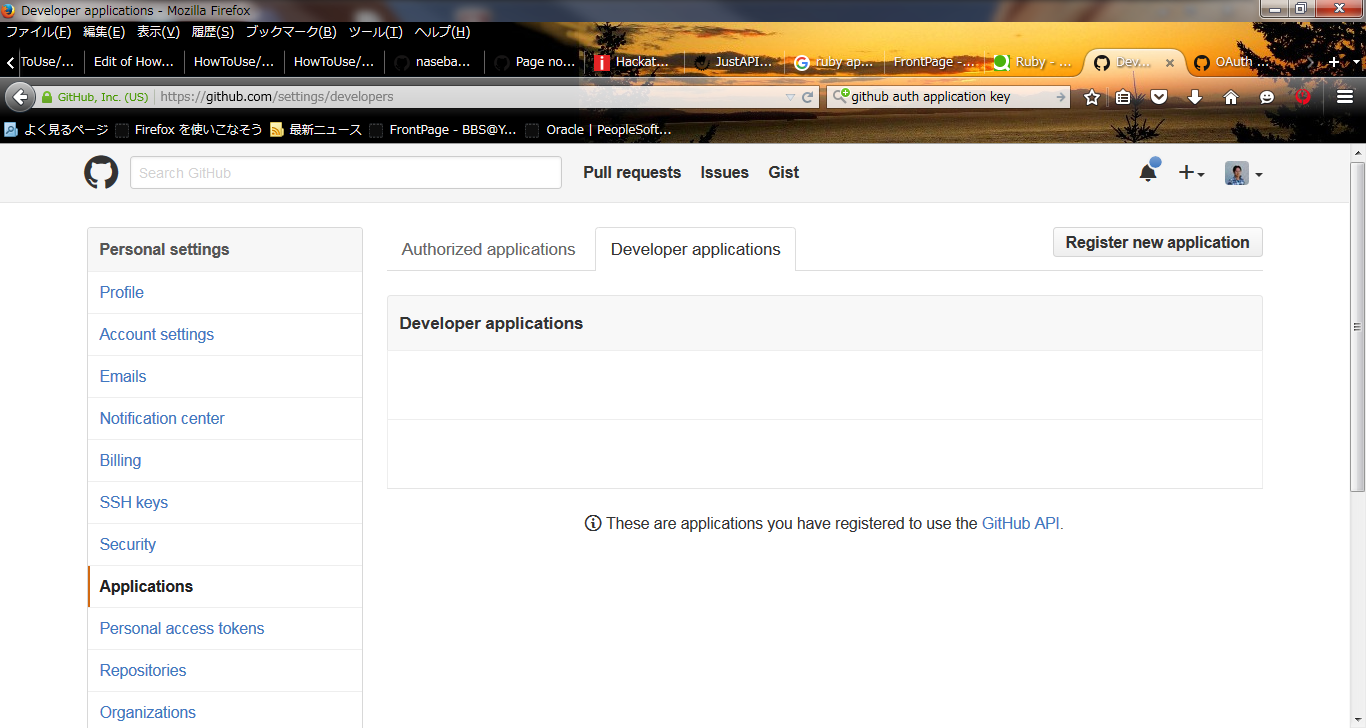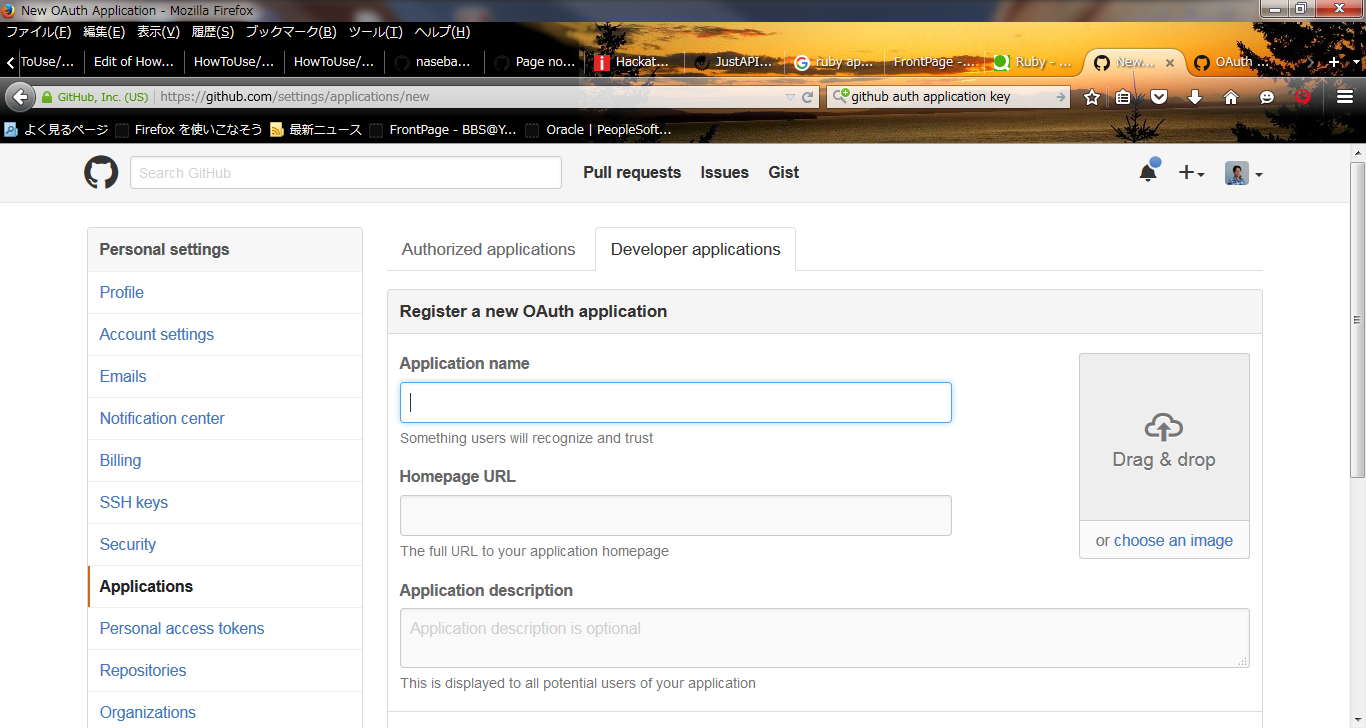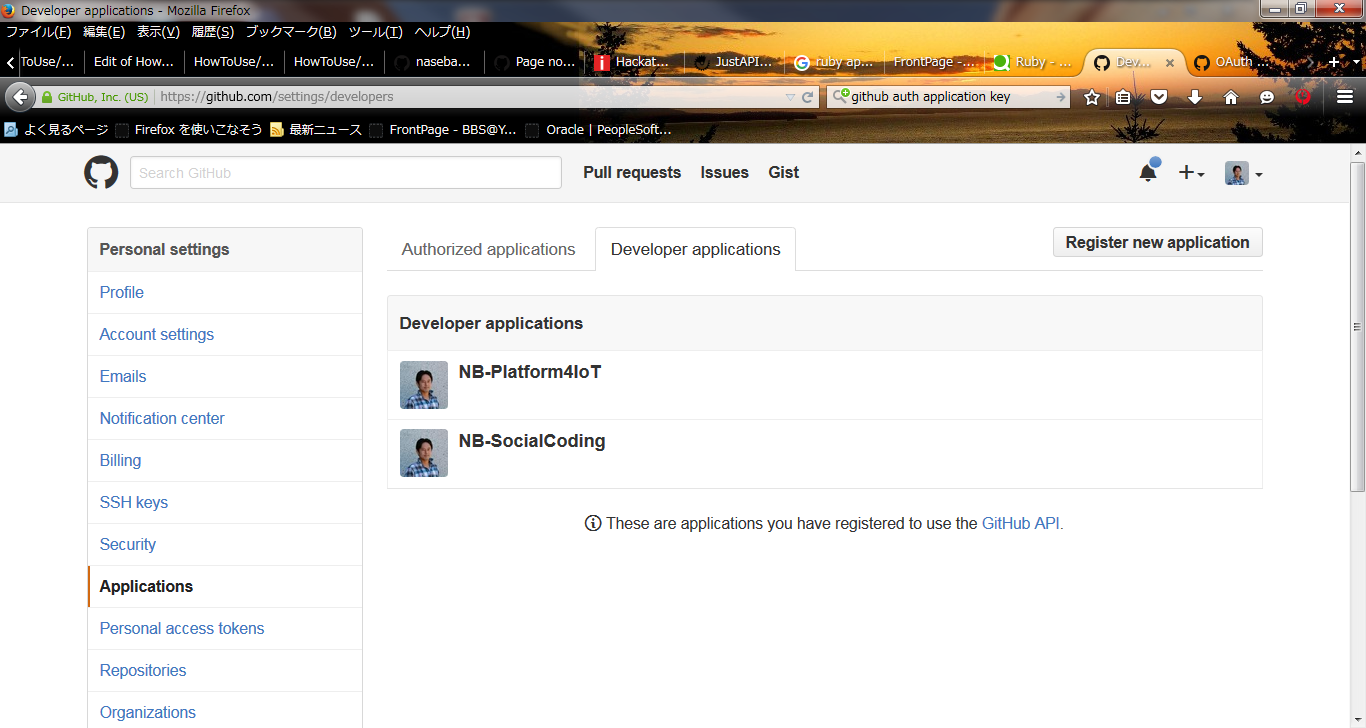Hello World from OSS Silicon Valley
HowToUse/RubyOnRails/4.2/Omniauth/1.2
_ Prerequisite
- Ubuntu Server installation (You can refer HowToUse/UbuntuServer/14.04)
- Ruby On Rails installation (You can refer HowToUse/RubyOnRails/4.1)
_ Install&Setup
_ Obtain Client ID and Client Secret from GitHub
- Step.1
- Access GitHub Developper page, and click "Register new application". [https://github.com/settings/developers]
- Step.2
- Input information on the new application, and click "Register Application" button. In this sample case, you can set "callback URL" as below.
http://<host name>/auth/github/callback
- Step.3
- Then you will get "Client ID", and "Client Secret" code for GitHub API.
_ Setup Client ID and Client Secret to your Rails project
- Step.1
- Edit Gemfile
$ vi Gemfile
gem 'omniauth' gem 'omniauth-github'
(You can see sample from here.)
- Step.2
- Install gem files
$ bundle install
- Step.3
- Setup "Client ID" and "Client Secret" to environment variable.
$ vi ~/.bashrc
export GITHUB_KEY="<Client ID>" export GITHUB_SECRET="<Client Secret>"
_ HowToUse
- Step.1
- Add omniauth.rb
$ vi config/initializers/omniauth.rb
Rails.application.config.middleware.use OmniAuth::Builder do provider :github, ENV['GITHUB_KEY'], ENV['GITHUB_SECRET'] end
(You can see sample from here.)
- Step.2
- Add User model.
$ rails g model user provider:string uid:string screen_name:string name:string $ rake db:migrate
- Step.3
- Add method for User model.
class User < ActiveRecord::Base
def self.create_with_omniauth(auth)
create! do |user|
user.provider = auth['provider']
user.uid = auth['uid']
user.screen_name = auth['info']['nickname']
user.name = auth['info']['name']
end
end
end
(You can see sample from here.)
- Step.4
- Create necessary controllers.
$ rails g controller welcome index $ rails g controller sessions
- Step.5
- Edit routes.
$ vi config/routes.rb
get 'welcome/index' ... root 'welcome#index' get '/auth/:provider/callback', :to => 'sessions#create' post '/auth/:provider/callback', :to => 'sessions#create' get '/logout' => 'sessions#destroy', :as => :logout
(You can see sample from here.)
You can check the configuration result from the following command.
$ rake routes
- Step.6
- Edit Application controller.
$ vi app/controller/application_controller.rb
class ApplicationController < ActionController::Base
protect_from_forgery
def login_required
if session[:user_id]
@current_user = User.find(session[:user_id])
else
redirect_to root_path
end
end
helper_method :current_user
private
def current_user
@current_user ||= User.find(session[:user_id]) if session[:user_id]
end
end
(You can see sample from here.)
- Step.7
- Edit Session controller.
$ vi app/controllers/session_controller.rb
class SessionsController < ApplicationController
def create
auth = request.env['omniauth.auth']
user = User.find_by_provider_and_uid(auth['provider'], auth['uid']) || User.create_with_omniauth(auth)
session[:user_id] = user.id
redirect_to root_path
end
def destroy
session[:user_id] = nil
redirect_to root_path
end
end
(You can see sample from here.)
- Step.8
- Edit controller file which should have authentication.
class XXXController < BaseController before_action :login_required
(You can see sample from here.)
- Step.9
- Edit view file.
$ vi app/view/layout/application.rb
<% if current_user %> <%= current_user.name %> <%= link_to 'Logout', logout_path %> <% else %> <%= link_to 'Login', '/auth/github' %> <% end %>
(You can see sample from here.)
_ Author
S.Yatsuzuka
Attach file:  GetClientID_fig3.png 164 download
[Information]
GetClientID_fig3.png 164 download
[Information]
 GetClientID_fig2.png 166 download
[Information]
GetClientID_fig2.png 166 download
[Information]
 GetClientID_fig1.png 163 download
[Information]
GetClientID_fig1.png 163 download
[Information]
Last-modified: 2016-06-25 (Sat) 23:26:37 (2853d)


